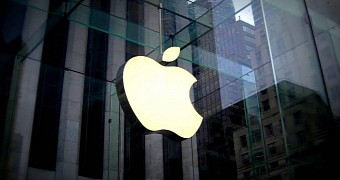Apple has just revealed the financial results for the second quarter of the fiscal year 2017 and the company posted a total of $52.9 billion in revenue and year-over-year growth. However, iPhone sales dropped compared to the same months of last year.
During the second quarter of this fiscal year, Apple managed to ship 50.8 million iPhones, down from 51.2 million shipped during the same period of 2016. Despite this, Apple managed to exceed profit expectations and reported earnings per share of $2.10.
Even though iPhone sales dropped 1%, revenue actually increased slightly, showing that sales of the premium iPhone 7 Plus have actually increased. Apple’s Services business recorded an 18% higher revenue compared to the same period of last year, while Apple Watch category and Beats hardware rose 31%.
iPad sales dropped, while Apple shipped 4.2 million Mac units
iPhones weren’t the only Apple products that didn’t record an increase in sales, as iPad sales dropped to 8.9 million units, while Mac sales reached the 4.2 million mark, up from 4 million last year. Moreover, App Store sales were up 40% in the second fiscal quarter, with a 20% increase in the number of developers.
"We are proud to report a strong March quarter, with revenue growth accelerating from the December quarter and continued robust demand for iPhone 7 Plus," said Apple Chief Executive Tim Cook.
"We've seen great customer response to both models of the new iPhone 7 (PRODUCT)RED Special Edition and we're thrilled with the strong momentum of our Services business, with our highest revenue ever for a 13-week quarter," he added.
Lower sales of iPhones could have been determined by the highly anticipated iPhone 8, which is expected to be announced later this year. The new smartphone will feature a new design, OLED display, 3D sensing camera, wireless charger and a vertical dual-camera setup on the back. These new features might have convinced some Apple consumers to hold off their purchase until the new smartphone arrives.

 14 DAY TRIAL //
14 DAY TRIAL //